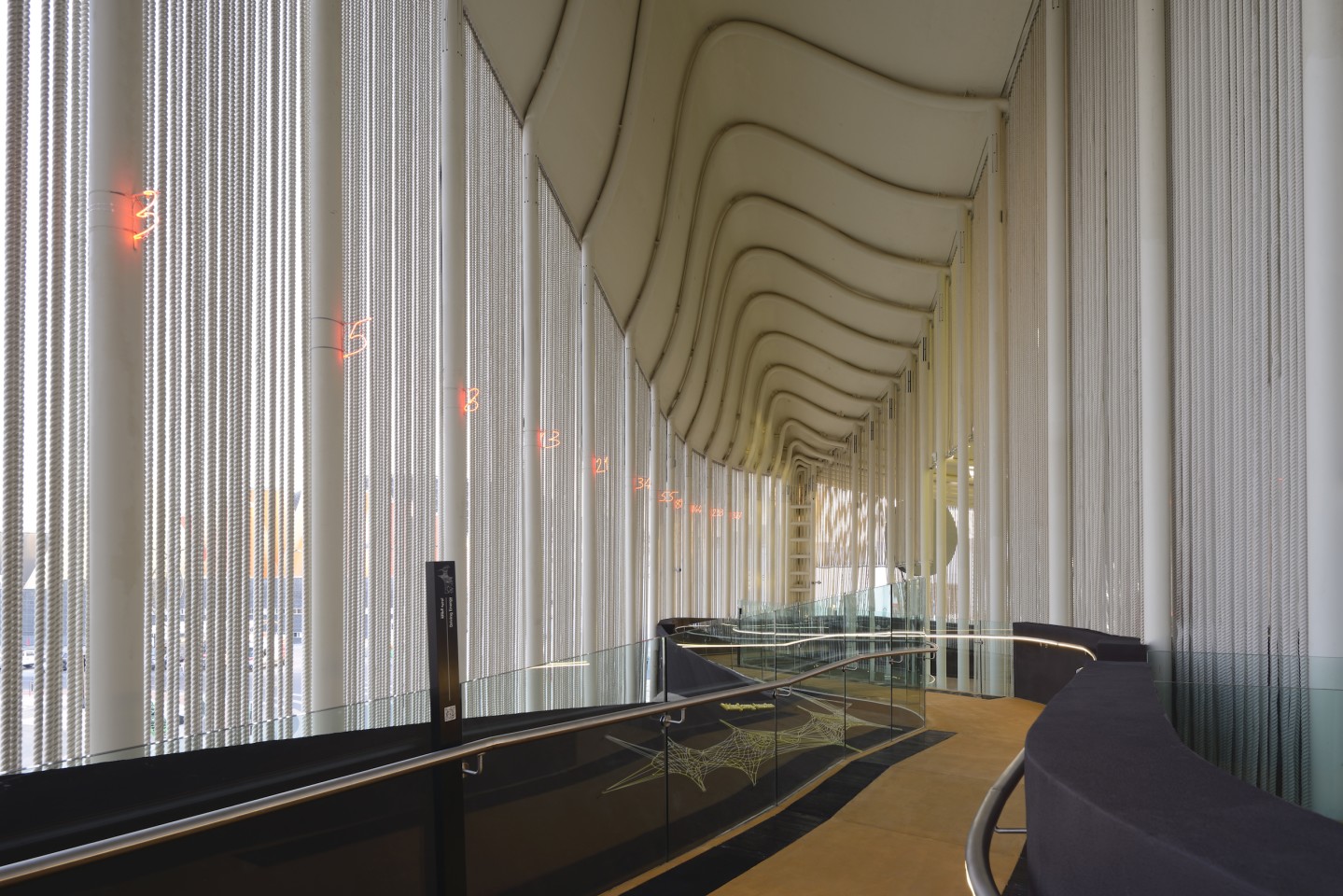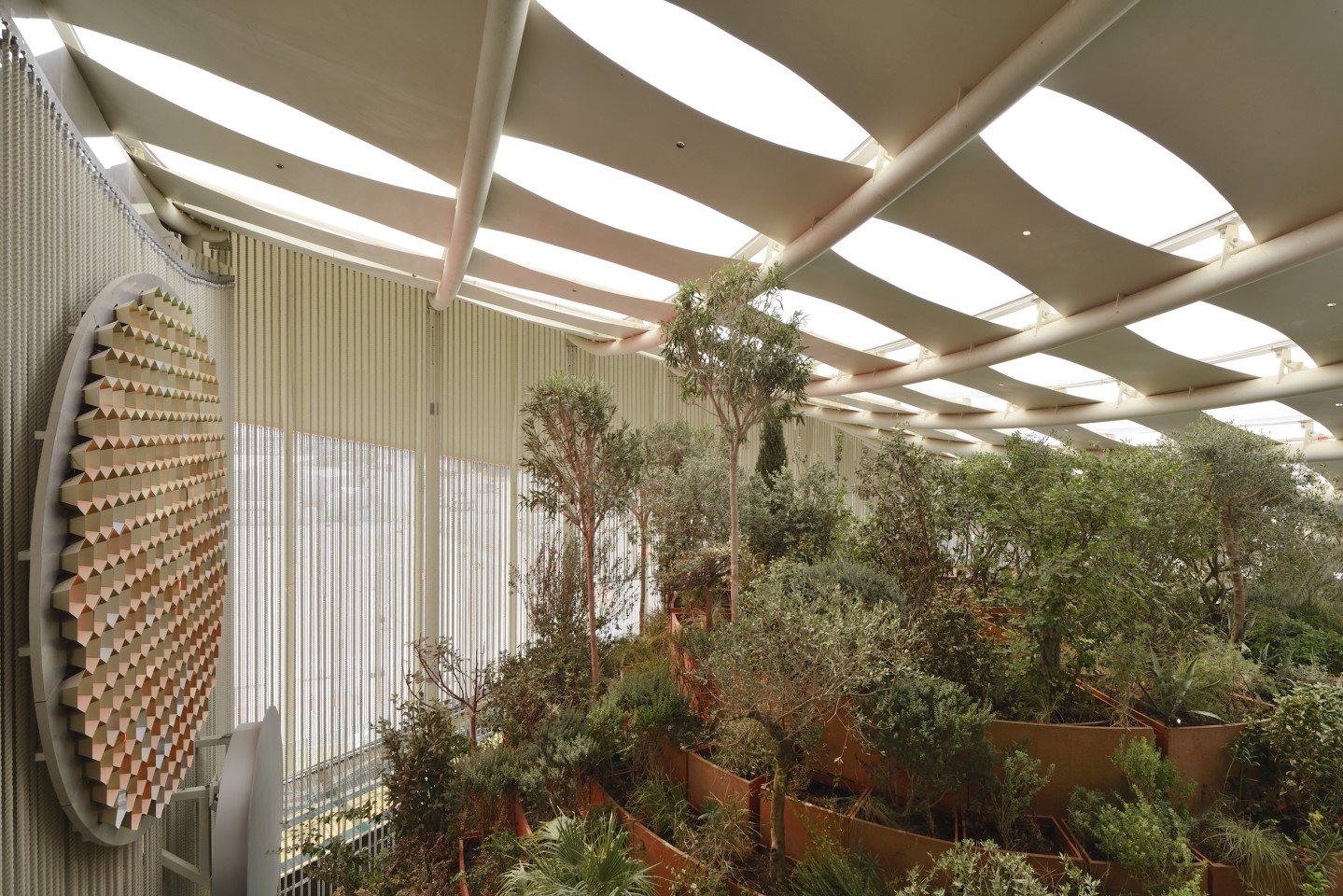Dubai’s Expo 2020 event recently kicked off and Carlo Ratti Associatti (CRA) and Italo Rota have designed and installed a pavilion to represent Italy. Hoping to produce a temporary structure that wouldn’t eventually end up in landfill, the team used a wide range of recycled and recyclable materials to promote sustainable building practices, including upturned boats, rope made from millions of recycled bottles, and even old orange peel.
The Italian Pavilion building at Expo Dubai 2020, to give it its full name, measures 3,500 sq m (38,000 sq ft), and is partly built on top of a sand dune. The main structure comprises three boat hulls, which are supported by steel pillars (CRA suggests the boats will be used afterwards).
“The three boat hulls that form the pavilion’s roof vary in length from 40 m [131 ft] to 50 m [164 ft],” explains CRA. “They were produced with the contribution of Fincantieri, the largest shipbuilder group in Europe. The hulls are supported by more than 150 slender vertical steel pillars, each 27 m [88 ft] high. In turn, they support a wave-shaped roof membrane made of ETFE pillows and a layer of perforated thin metal sheets that filter the sunlight. Seen from above, the hulls are coated in an innovative paint developed by paints and coatings company Gruppo Boero. They are the three colors of the Italian flag – green, white, and red – and form what might be the biggest ‘tricolor’ in Italy’s history (2,100 sq m/22,600 sq ft).”

Michele Nastasi
There are no exterior walls here. Instead, the facade is made up of a curtain of nautical rope that was created from approximately 2 million recycled plastic bottles. The rope, which will be reused, forms a mesh that stretches almost 70 km (roughly 43 miles) in length and incorporates LEDs for displaying multimedia messages. Other recycled and sustainable materials used in the build include coffee grinds and orange peels, which were left to dry and turned to powder to coat pathways and walkways. There’s also 160 plant species and microalgae cultivated by TOLO Green, which has been installed in a bid to help purify the air.
Elsewhere lies a cafe, plus a 3D-printed copy of Michelangelo’s David. This was developed by the Museum of the Galleria dell’Accademia of Florence and the Ministry of Culture, in partnership with the Department of Civil and Environmental Engineering at the University of Florence.
Additionally, the pavilion’s interior contains no air-conditioning system to keep visitors cool (there is air-con in some closed-off office areas, however), which is a bold choice indeed in sweltering Dubai. We asked a CRA representative how this was achieved.
“Cooling is an important part of our design given where the Italian Pavilion is located,” the firm acknowledged over email. “In this regard, the decision to not include a solid exterior wall makes a strong impact on facilitating natural air flows. In addition, indoor temperature is also moderated through the large amount of shade produced by the natural ropes made of recycled plastic. These, along with a localized system with a few misters, keep the pavilion space pleasant to move around and minimize energy consumption on air conditioning (which is installed only in the closed offices at the ground level).”

Michele Nastasi
The Italian Pavilion building at Expo Dubai 2020 will be on-site until March 31, 2022. During this time, it will host multiple events related to sustainability.
Sources: CRA, Dubai Expo 2020
Source of Article